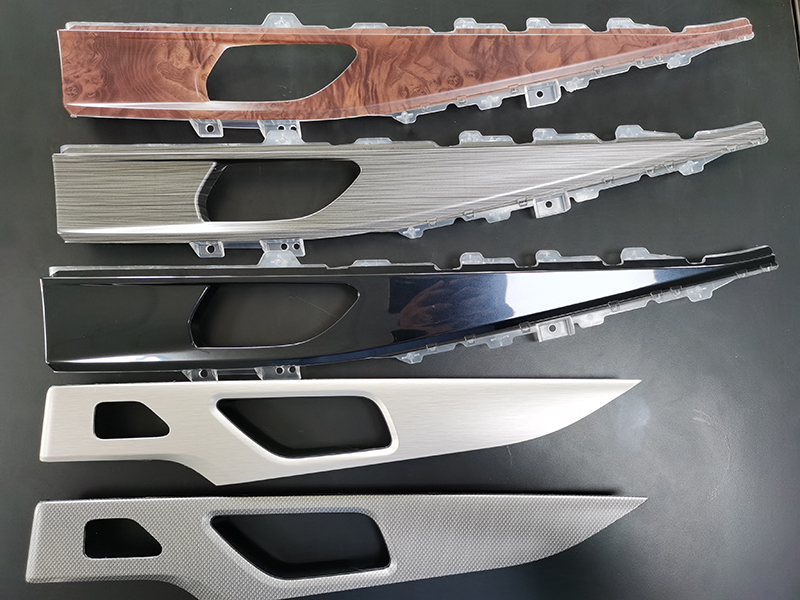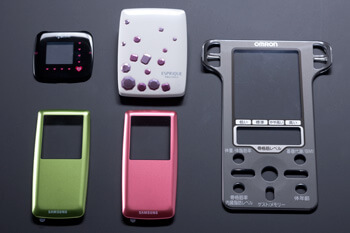Innovative Manufacturing Techniques: In-Mold Decorations Explained
Innovative Manufacturing Techniques: In-Mold Decorations Explained
Blog Article
In-Mold Decorations: Elevating Products With Precision and Appearances
In the realm of product style, the marriage of precision and visual appeal holds an extremely important placement in recording customer attention and commitment. In-Mold Decorations (IMD) have actually emerged as a sophisticated strategy that not only elevates the aesthetic appeal of products however likewise makes sure a careful assimilation of design components.
Advantages of In-Mold Decorations
Making use of in-mold decorations uses producers an affordable method to seamlessly incorporate elaborate layouts onto plastic surfaces throughout the manufacturing process. This innovative technique includes placing a pre-printed film or tag into the mold and mildew prior to injecting the molten plastic, leading to an irreversible fusion of the design with the item. The advantages of in-mold designs are manifold, starting with the capability to accomplish high-resolution graphics and in-depth styles that improve the aesthetic charm of the end product. Moreover, this procedure gets rid of the demand for additional procedures such as paint or post-decoration, enhancing the production procedure and minimizing manufacturing time and costs.
In addition to enhancing appearances, in-mold decors also enhance the sturdiness and longevity of the style as it ends up being an essential part of the product, instead than a surface layer that can diminish in time. The smooth combination of decors through in-mold strategies makes sure a uniform and consistent appearance across all produced things, keeping brand name consistency and quality requirements - In-Mold Decorations. On the whole, the advantages of in-mold designs make it a favored choice for makers aiming to boost their products with precision and aesthetic charm
Accuracy in Design Integration
Attaining careful style assimilation through in-mold decors requires an eager emphasis on accuracy and focus to information from the first stages of the manufacturing procedure. The success of in-mold decorations rests on the seamless integration of the style with the product, creating a harmonious and aesthetically appealing outcome. Accuracy in design assimilation includes elements such as making sure the exact placement of the design within the mold and mildew, picking the right products to attain the desired visual, and preserving consistency throughout the production procedure.
One secret facet of accuracy in layout assimilation is the placement of the decor with the item's attributes and shapes. This requires careful preparation and implementation to guarantee that the layout enhances the product's form and improves its general look. Furthermore, focus to detail is crucial in maintaining the top quality and consistency of the decors across several manufacturing runs, making certain that each item satisfies the highest criteria of accuracy and visual charm. By prioritizing accuracy in style integration, suppliers can boost their items and produce a long lasting perception on customers.
Appearances and Aesthetic Influence
With a concentrate on enhancing the overall allure of products, the appearances and aesthetic impact of in-mold decorations play a crucial function in fascinating consumer focus. In today's affordable market, where consumers are inundated with choices, the visual appeal of an item can be the setting apart element that affects investing in decisions. In-mold designs provide a distinct chance to elevate the appearances of products by offering elaborate styles, lively colors, and seamless surfaces that traditional decorating methods may battle to attain.
The visual impact check these guys out of in-mold designs extends past mere looks; it connects brand name quality, attention, and identification to detail. By integrating visually attractive aspects into item style, producers can develop a strong brand name visibility that resonates with consumers on a subconscious level. Additionally, the precision and uniformity provided by in-mold decor methods ensure that every product fulfills the highest possible requirements of visual Check This Out charm, strengthening brand name credibility and customer depend on.
Cost-Effectiveness of IMD

IMD reduces the need for second operations like painting or labeling, saving both time and sources. By incorporating the decor straight right into the molding process, IMD gets rid of the extra steps needed for using decors post-production. This streamlined procedure not only minimizes labor prices but also reduces the threat of mistakes or problems that may develop during second decorating processes.
Furthermore, IMD enhances the resilience of decorations by encapsulating them within the product, making certain a longer-lasting and more immune surface - In-Mold Decorations. This sturdiness translates right into lowered upkeep and substitute costs over the item's lifecycle, making IMD an economical option for accomplishing remarkable aesthetics and aesthetic appeal in manufacturing
Durability and Longevity
Including in-mold decorations not only ensures cost-effectiveness in manufacturing processes yet likewise significantly enhances product sturdiness and longevity. The procedure of in-mold decoration entails the application of graphics or decorative coatings during the molding process, producing a smooth and integrated design that is safeguarded within the item itself. This safety layer supplied by in-mold decors works as a shield versus deterioration, scrapes, fading, and other environmental aspects that could jeopardize the appearance and longevity of the product gradually.
Products with in-mold decors are recognized for their resistance to abrasion, chemicals, and UV direct exposure, making them suitable for applications that require long-term efficiency and visual appeals. Unlike standard surface-applied decors that can remove or discolor with usage, in-mold decors end up being an innate part of the item, making sure that the layout stays undamaged and dazzling throughout the product's life expectancy. This longevity not just enhances the total quality of the item however also minimizes the need for regular upkeep or replacements, inevitably offering long-term expense financial savings for suppliers and customers alike.
Conclusion

The benefits of in-mold designs are manifold, starting with the capacity to attain high-resolution graphics and comprehensive layouts that boost the visual appeal of the final product.In enhancement to improving appearances, in-mold designs additionally improve the longevity and see this site longevity of the style as it ends up being an essential component of the item, rather than a shallow layer that can wear off over time. In-mold decorations offer an one-of-a-kind chance to boost the aesthetic appeals of products by giving elaborate layouts, dynamic shades, and seamless surfaces that standard designing approaches might have a hard time to achieve.
The procedure of in-mold decoration involves the application of graphics or ornamental surfaces during the molding procedure, developing a smooth and integrated design that is shielded within the item itself. Unlike conventional surface-applied designs that can peel off or fade with use, in-mold designs end up being an intrinsic part of the item, making certain that the design continues to be vibrant and intact throughout the product's life expectancy.
Report this page